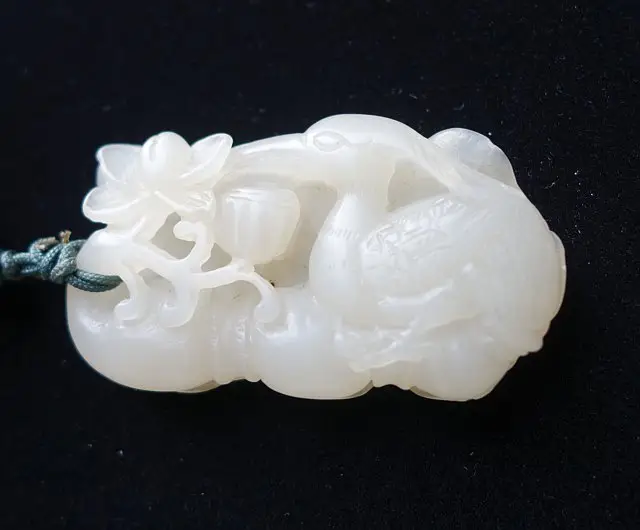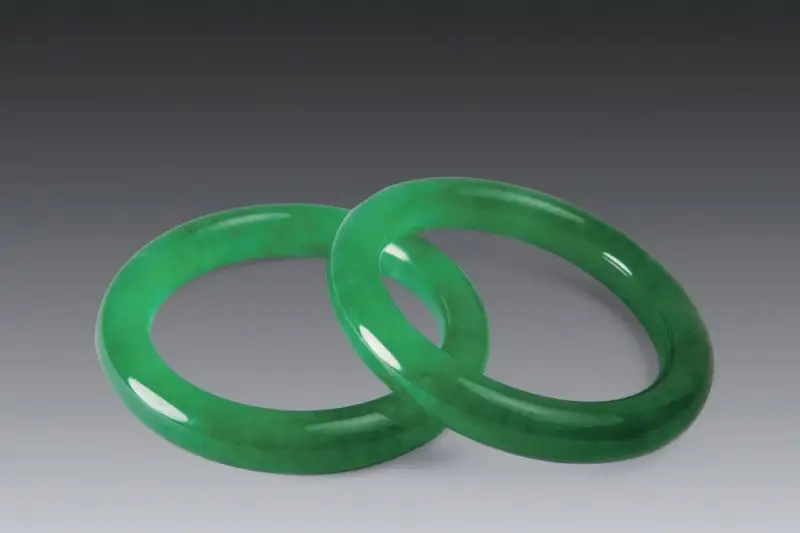Table of Contents
Introduction
The name “garnet” comes from the Latin word “granatum,” meaning pomegranate seed, due to its resemblance in color and shape to pomegranate seeds. It is a group of silicate minerals that have been used as gemstones and abrasives since the Bronze Age.
Garnet is not a single mineral, but rather a group of minerals with a wide range of colors, including deep red, pink, purple, orange-yellow, green, black, and more. Due to its unique solid solution structure (composition), garnet also includes asteria and color-change garnet, providing a wide selection for collectors and users.
Natural garnet minerals can be classified into two solid solution series:
- Pyrope-Almandine-Spessartine
- Uvarovite-Grossular-Andradite
Synthetic garnet often contains rare earth elements that are either scarce or absent in natural garnet, and is therefore referred to as rare-earth garnet.
Types of Garnet
| Natural/Synthetic | Variety/Category | Gemological properties | Identification characteristics |
|---|---|---|---|
| Natural | Pyrope | Refractive index: 1.72~1.76 Specific gravity: 3.80 | Refractive index, specific gravity, and absorption spectrum characteristics; purple pyrope-almandine garnet is also known as rhodolite. |
| Natural | Spessartine | Refractive index: 1.79~1.81 Specific gravity: 4.16 | High refractive index and specific gravity, absorption spectrum characteristics. |
| Natural | Almandine | Refractive index: 1.76~1.83 Specific gravity: 4.00 | High refractive index and specific gravity, absorption spectrum characteristics. |
| Natural | Uvarovite | Refractive index: 1.86~1.87 Specific gravity: 3.77 | Refractive index, specific gravity, and transparency. |
| Natural | Grossular | Refractive index: 1.73~1.75 Specific gravity: 3.50~3.60 | Refractive index, specific gravity, and wavy heat-like inclusions. |
| Natural | Andradite | Refractive index: 1.85~1.87 Specific gravity: 3.85 | Refractive index, specific gravity, and asbestos-like inclusions. |
| Synthetic | Yttrium Aluminium Garnet, YAG | Refractive index: 1.833 Specific gravity: 4.04~4.60 | Bubbles, high specific gravity, and high refractive index. |
| Synthetic | Gadolinium Gallium Garnet, GGG | Refractive index: 1.97 Specific gravity: 7.05 | Bubbles, extremely high specific gravity, and high refractive index. |
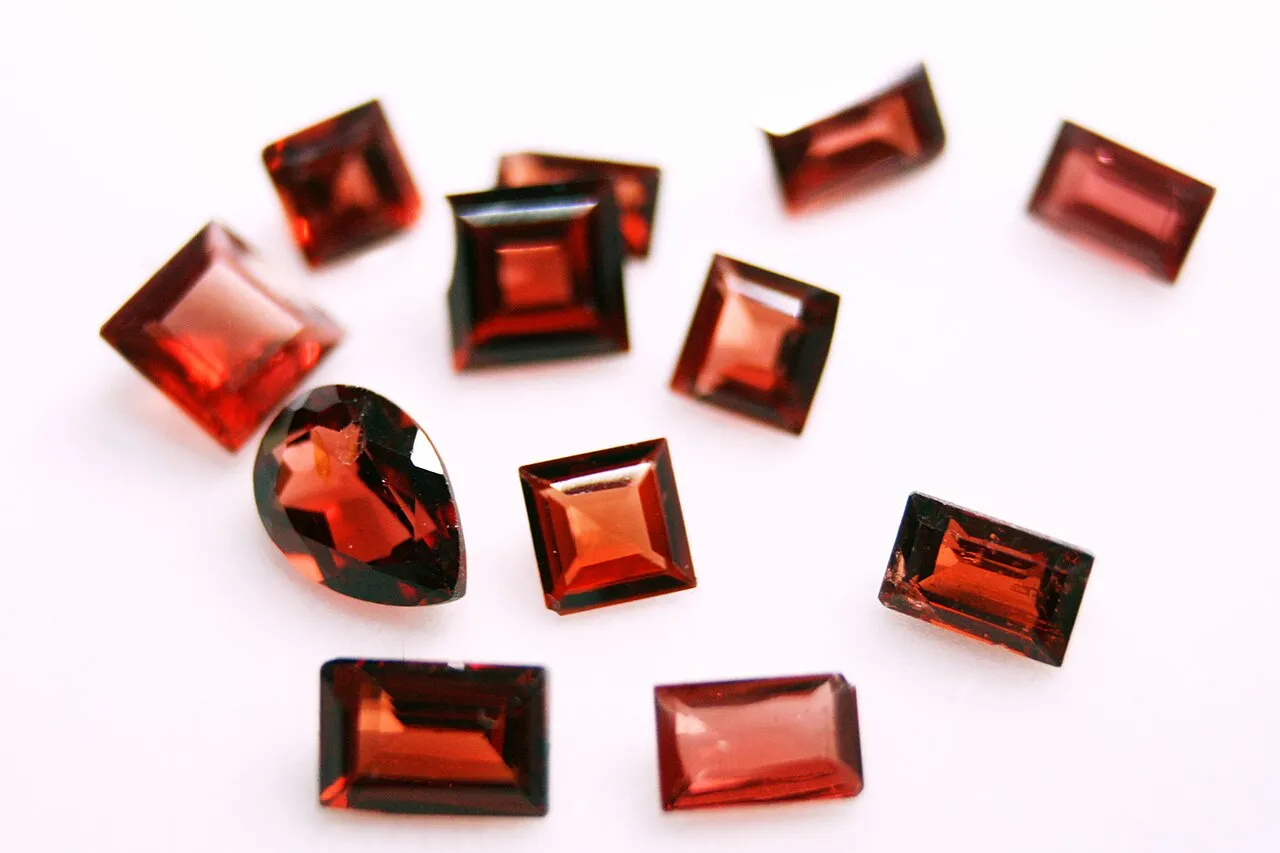
(Figure 1) 1
Garnet
- Crystal system: equiaxed crystal system
- Hardness: Varies widely, ranging from 6.5 to 7.5.
- Specific gravity: Various widely, ranging from 3.5~4.2.
- Luster: vitreous luster
- Transparency: Transparent.
- Colors: Yellow, brown, orange, red, green, purple, black, etc.
- Refractive index: 1.69 to 1.89, varying by type.
- Birefringence: None
- Fluorescence: None.
- Cleavage: No cleavage
- Characteristics: Properties vary significantly among different types.
- Imitations: Glass, YAG, tourmaline, and spinel.
Classification of Garnet
Garnet is a versatile and colorful gemstone with a wide range of chemical compositions and colors, commonly used in both gemstone and industrial applications. Below are the main types of garnet and their characteristics:
Pyrope
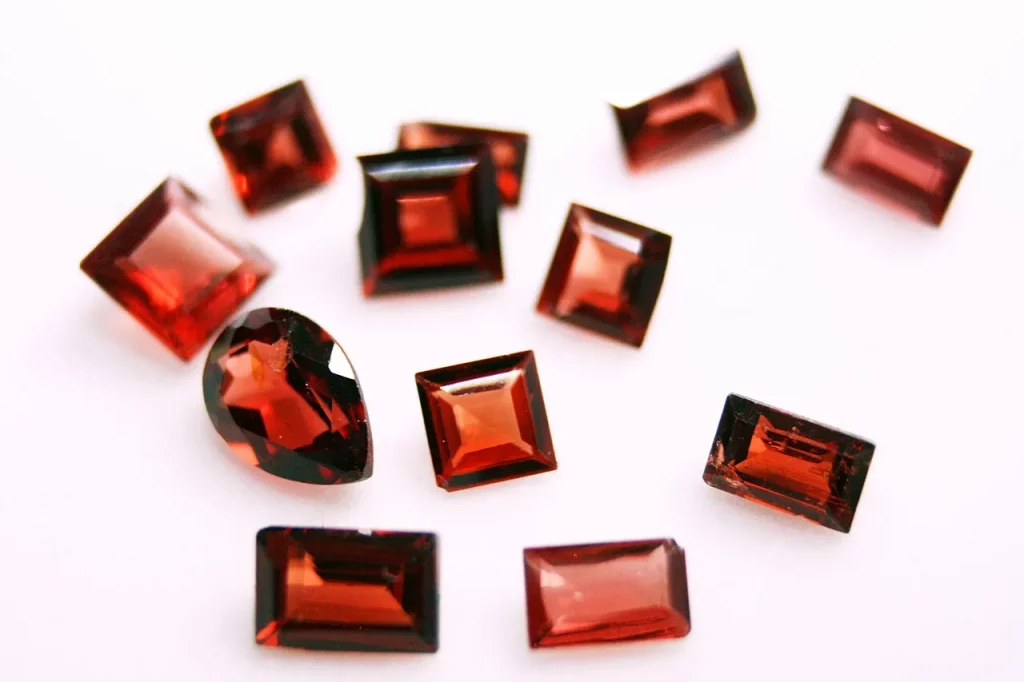
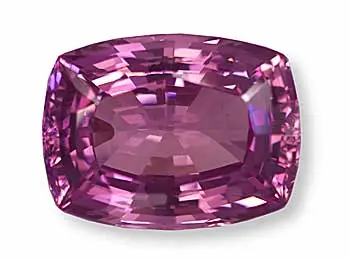
Chemical composition: Mg3Al2(SiO4)3
Characteristics: Color range from deep red to near black; transparent varieties are used as gemstones.
Introduction: The English name comes from the Greek word meaning “fiery red,” which is why pyrope is often referred to as “red garnet.” A variant called pyrope-almandine, commercially known as “rhodolite,” gets its name from the Greek word for “rose.” According to GIA classification, red garnet does not have any purple tones. Among the garnet family, red garnet is one of the more affordable types.
Spessartine
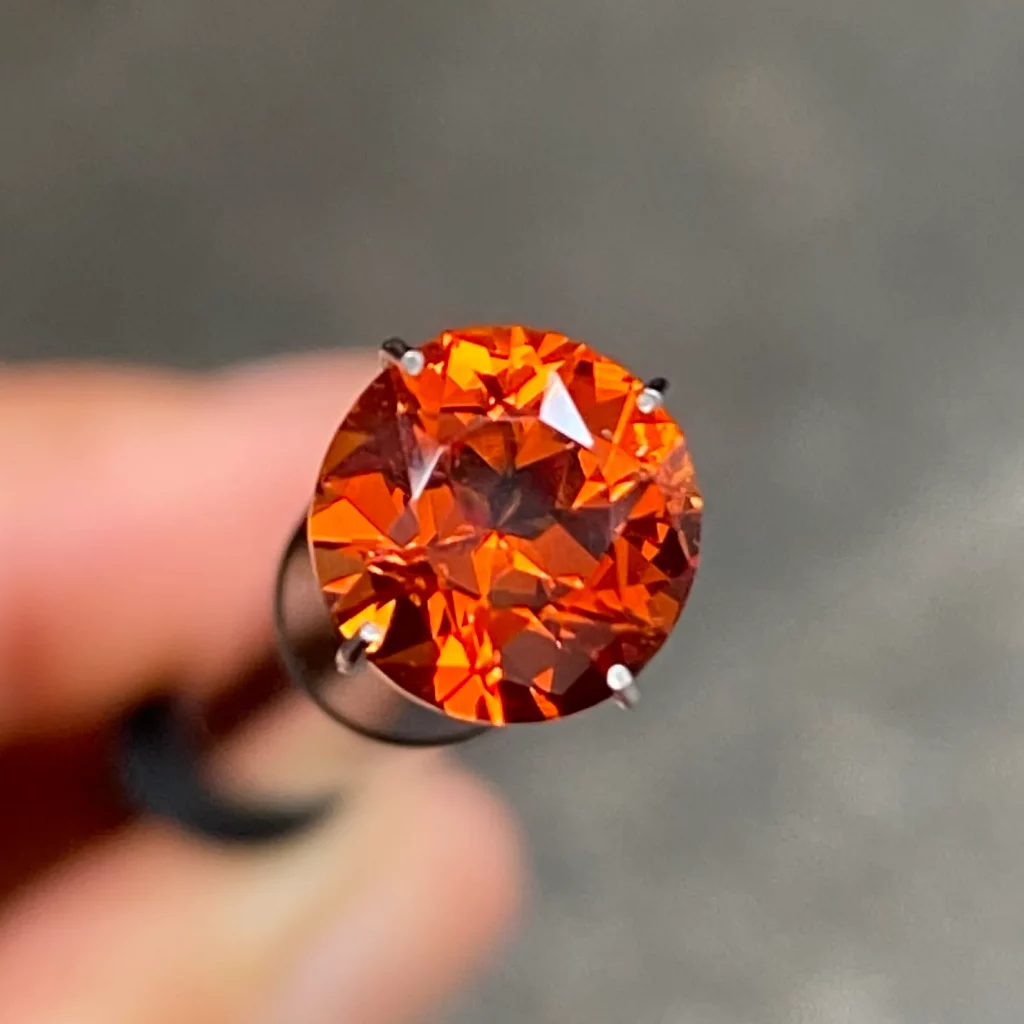
Chemical composition: Mn2+3Al2(SiO4)3
Characteristics: The color ranges from yellow-orange to reddish-orange. The beautiful gemstone form is called mandarin garnet or hessonite and is also sometimes referred to as “Fanta stone.”
Introduction: The beautiful gemstone-grade spessartine resembles yellow sapphire and is called “mandarin garnet” in the market. The yellow-orange version is named hessonite due to its similarity to the old Dutch flag’s colors. Additionally, because of its resemblance to the color of a certain orange soda, it is sometimes called “Fanta stone.”
Almandine
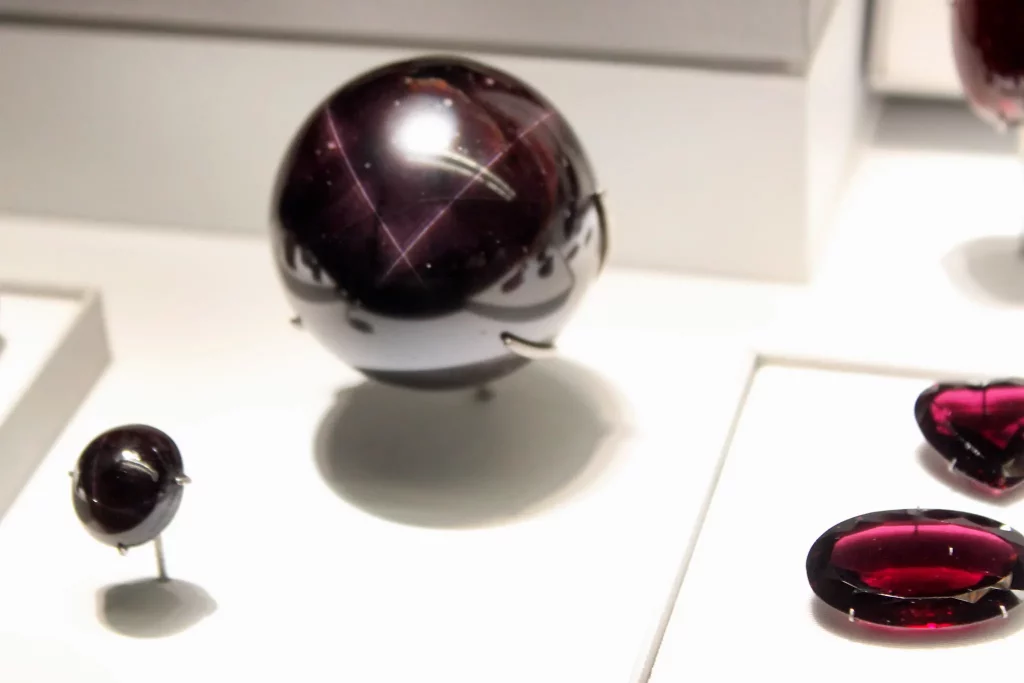
Chemical composition: Fe3Al2(SiO4)3
Characteristics: Exhibits a strong purple hue, also known as “Ziyawu” or “purple garnet,” and often shows asterism.
Traits: High refractive index and sub-adamantine luster make it popular in the gemstone market.
Introduction: Almandine garnet is noticeably darker and more purple compared to red garnet. In ancient China, it was called “Ziyawu” (purple garnet). Due to rutile needle inclusions, cabochon-cut stones may display asterism and are referred to as “star garnet.”
Uvarovite
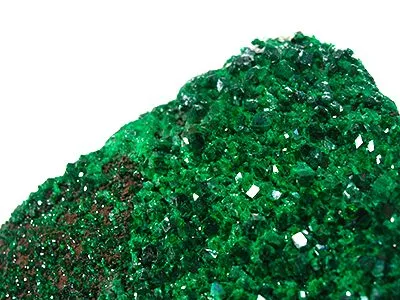
Chemical composition: Ca3Cr2Si3O12
Characteristics: A rare gemstone typically found as small crystals in metamorphic or igneous rocks.
Introduction: It is one of the rare gems in the garnet family. It usually appears as small crystals in metamorphic or igneous rocks and rarely produces gemstone-grade crystals.
Grossular
Chemical composition: Ca3Al2(SiO4)3
Characteristics: Wide range of colors, including cinnamon and green (such as Tsavorite).
Introduction: Initially named “cinnamon stone” due to its cinnamon-like color, it was renamed “grossularite” in 1808. Calcium-aluminum garnet (grossular) is one of the most colorful varieties of garnet, with different impurities resulting in various colors. Its green variety, Tsavorite, often referred to as “green garnet,” is especially valued for its emerald-like vivid green and is highly popular in the gemstone market.
Andradite
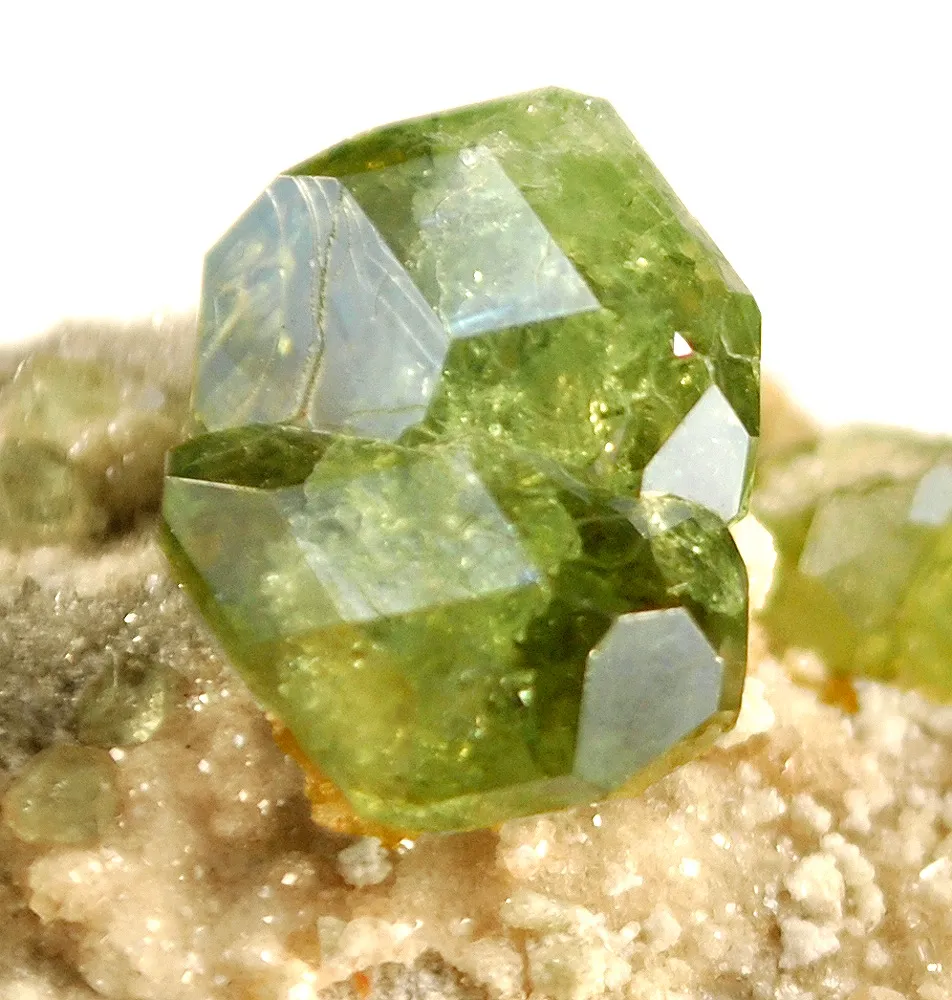
Chemical composition: Ca3Fe2Si3O12
Characteristics: Can appear in red, yellow, green, or black, such as topazolite, demantoid, and melanite.
Introduction: Different transition elements replacing others can result in red, yellow, brown, green, or black colors. There are three main categories based on color: yellow varieties are known as topazolite, green ones as demantoid, and black ones as melanite. Demantoid garnet, which contains vanadium, appears yellow-green to emerald green. It was first discovered in Russia’s Ural Mountains and is sometimes called the “Ural emerald.” Besides its beautiful green hue, demantoid has a high refractive index, giving it a diamond-like brilliance when cut into gemstones. The name “demantoid” is derived from a French word meaning “diamond-like.”
Yttrium Aluminium Garnet, YAG
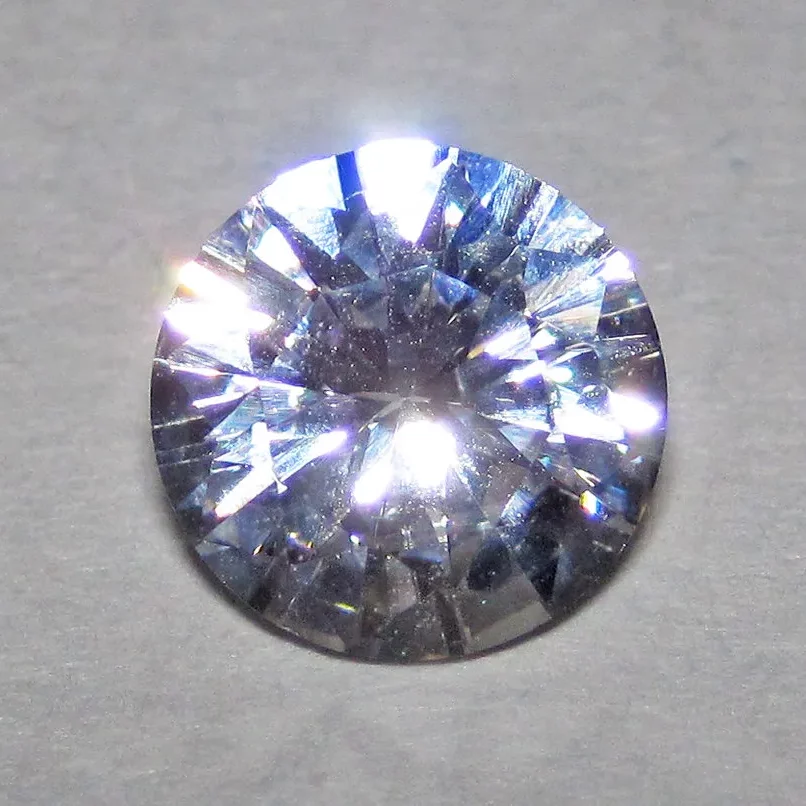
Chemical composition: Y3Al5O12
Characteristics: Synthetic transparent gemstones are used for high-hardness cutting and industrial purposes.
Gadolinium Gallium Garnet, GGG
Chemical composition: Gd3Ga2(GaO4)3
Introduction: Gadolinium Gallium Garnet (GGG) is a synthetic material created by the Czochralski process and has no natural counterpart. It has a garnet-like structure and is primarily used in electronic instruments, mostly produced in the United States.
Commercial Value of Garnet
Ornamental
For collection and display, garnet offers a wide range of colors and the potential for unique optical effects, making it appealing for collectors. The price range varies widely, from a few hundred New Taiwan Dollars per carat for the cheaper varieties to tens of thousands per carat for the more expensive ones. Garnet is known for its excellent hardness and durability, and it is a gemstone that does not typically require heat treatment, making it a reliable choice for buyers.
Although distinguishing real garnet from fake is relatively easy, identifying the specific variety can be challenging due to their similar compositions. Despite similar colors, the value can differ significantly, so it is important to pay attention during identification.
Industrially
Water Jet Cutting
- Due to its high hardness and durability, garnet is widely used in the water jet cutting industry. Its uniform grain size and scratch-free properties make it an ideal material for cutting metals and other hard materials.
Abrasive Industry
- Garnet sand, with its high hardness and chemical stability, is suitable for use in mechanical superfinishing, precision casting, and optical glass grinding industries. It effectively enhances grinding efficiency and ensures high-quality surface finishes.
Optical Applications
- In optical instruments and laser devices, synthetic garnet, such as yttrium aluminum garnet (YAG), is widely applied. Its high hardness and transparency make it an ideal material for solid-state lasers, and it is also used in phosphors, scintillators, and other optical applications.
- In summary, garnet demonstrates its unique value in both gem appreciation and industrial applications due to its diverse chemical composition and properties. Whether as a precious gemstone or a high-performance industrial material, garnet plays a crucial role in various fields.
Conclusion
In conclusion, garnet’s rich color range and wide applications make it highly favored by both collectors and the industrial sector. Whether as a coveted gemstone or a practical industrial material, it showcases profound value and potential. Its unique chemical composition and diverse characteristics enable it to play an important role in modern society, both in aesthetic pursuits and technological innovation.
Image Sources:
- Humanfeather / Michelle Jo,https://commons.wikimedia.org/wiki/File:Cut_garnet_collection.JPG ↩︎
- Western devil, https://commons.wikimedia.org/wiki/File:Piropas.jpg ↩︎
- YippeeD,https://commons.wikimedia.org/wiki/File:Spessartite-garnet-Lizunova-Fine-Jewels-Sydney-jeweller-Chifley-Square.jpg ↩︎
- greyloch,https://www.flickr.com/photos/greyloch/48467532202 ↩︎
- Robert M. Lavinskyhttps://commons.wikimedia.org/wiki/File:Uvarovite-sf13b.jpg ↩︎
- Robert M. Lavinsky,https://commons.wikimedia.org/wiki/File:Grossular-4jg64a.jpg ↩︎
- Robert M. Lavinsky,https://commons.wikimedia.org/wiki/File:Grossular-121703.jpg ↩︎
- Robert M. Lavinsky,https://commons.wikimedia.org/wiki/File:Andradite-dem09Ae.jpg ↩︎
- James St. John,https://www.flickr.com/photos/jsjgeology/ ↩︎
References:



